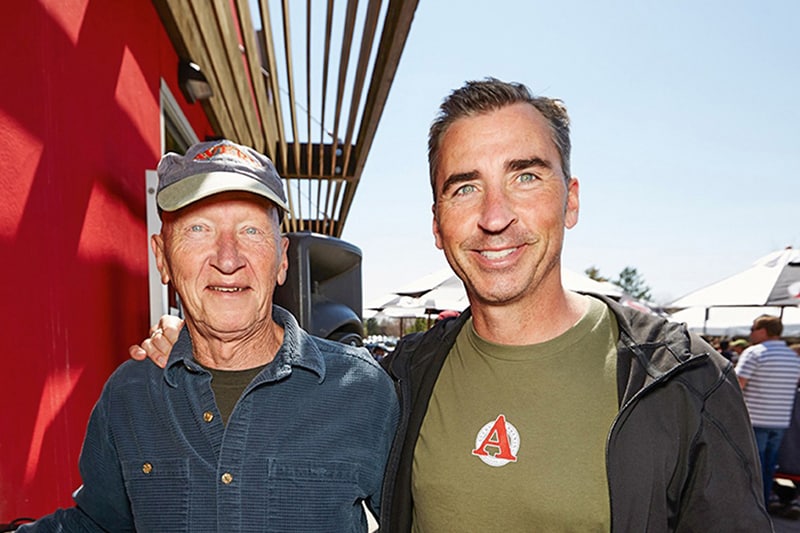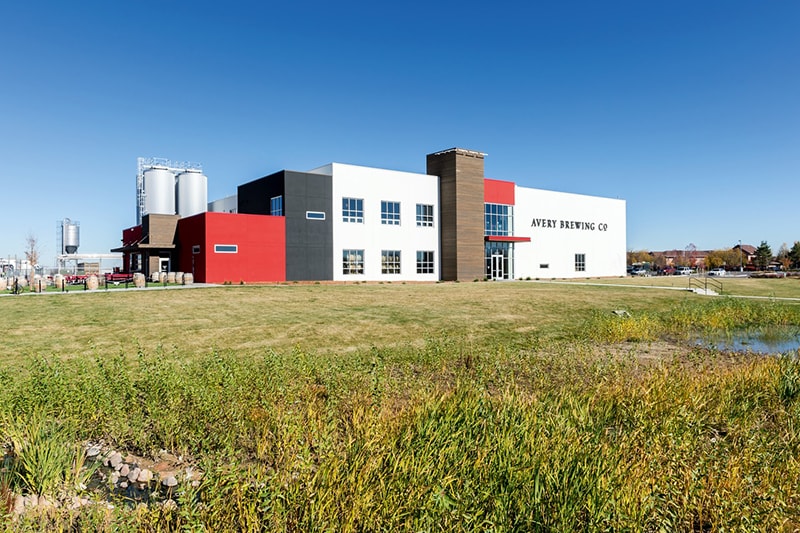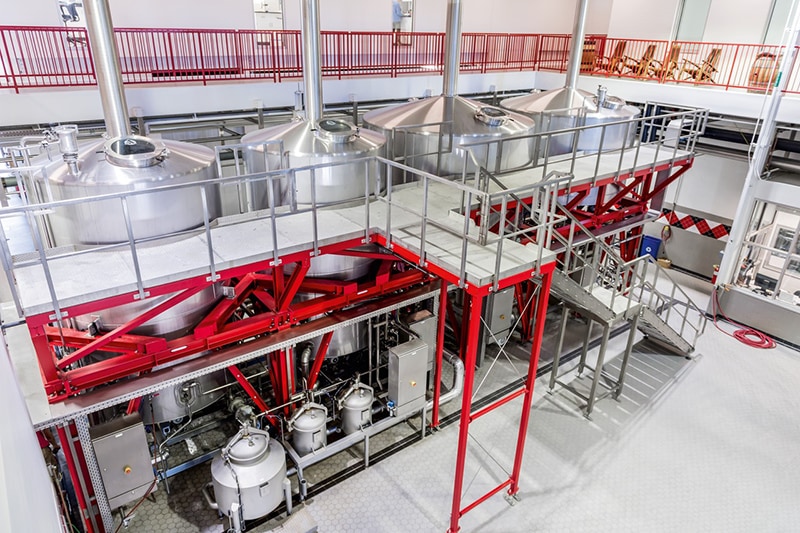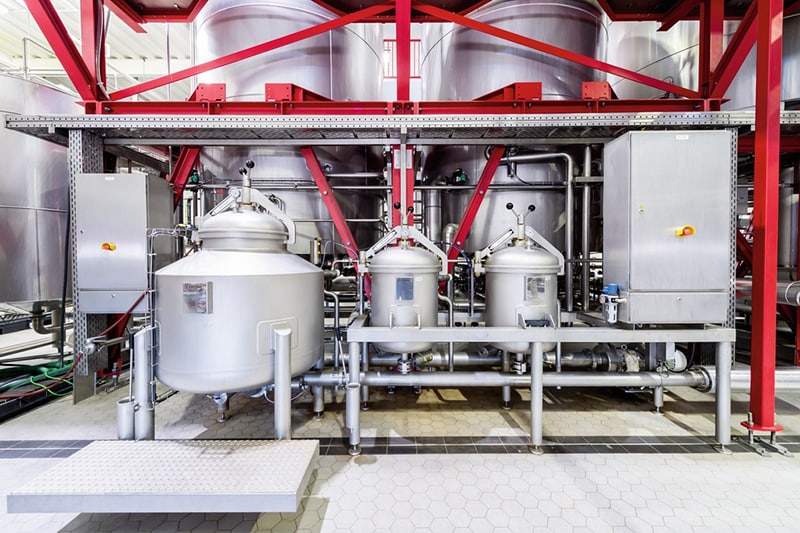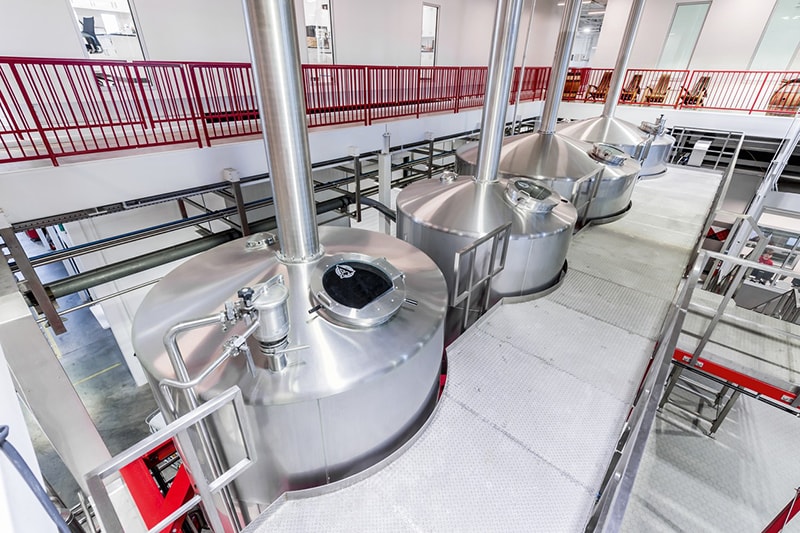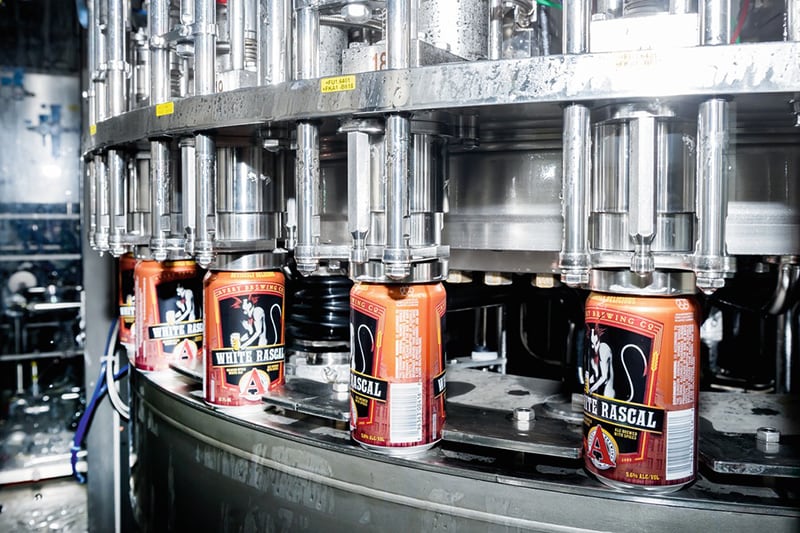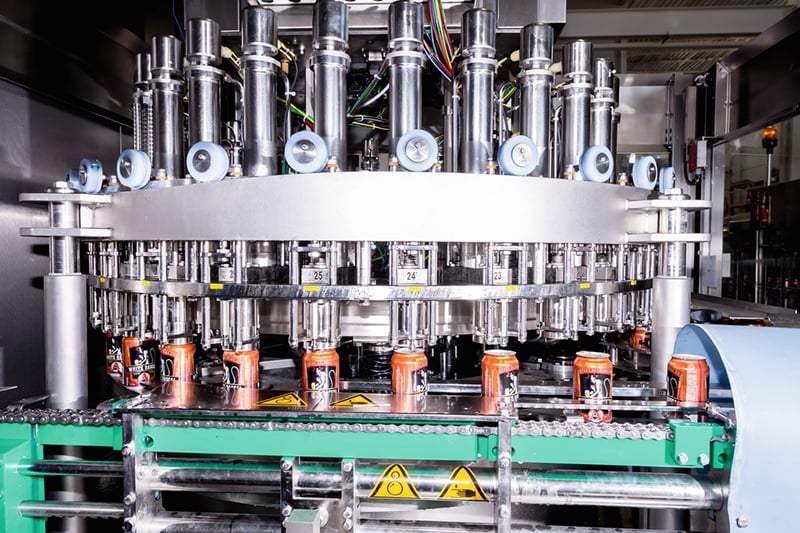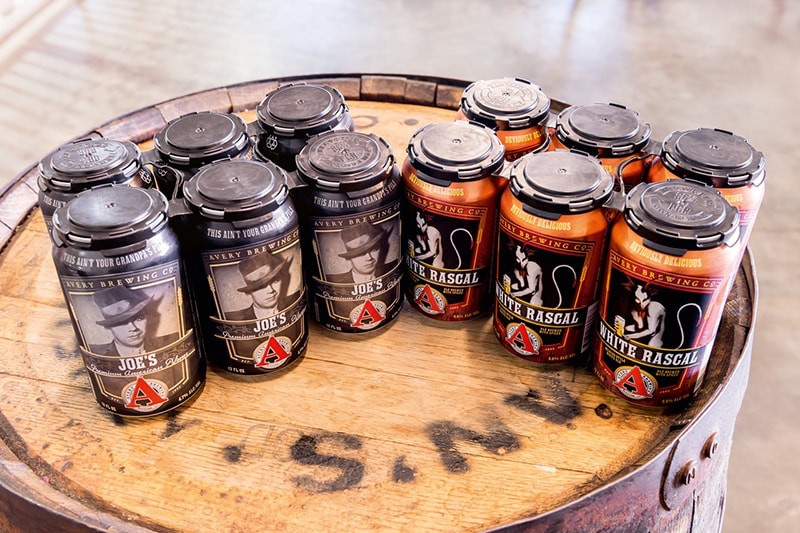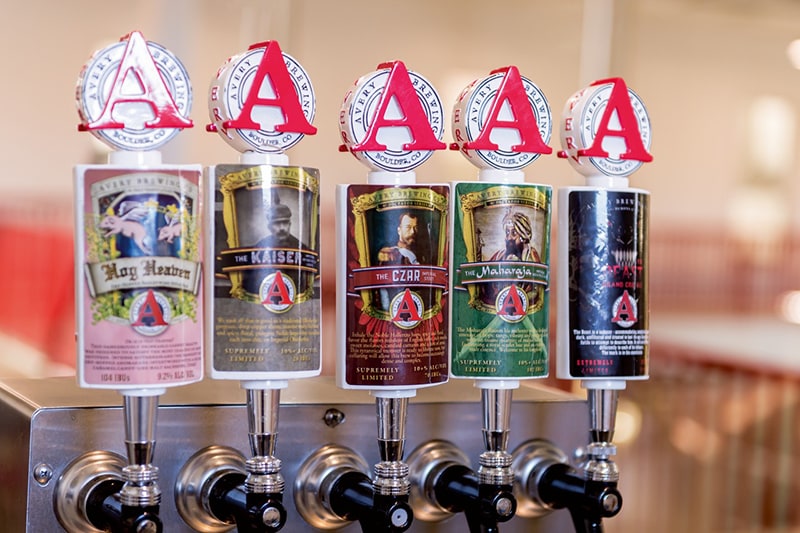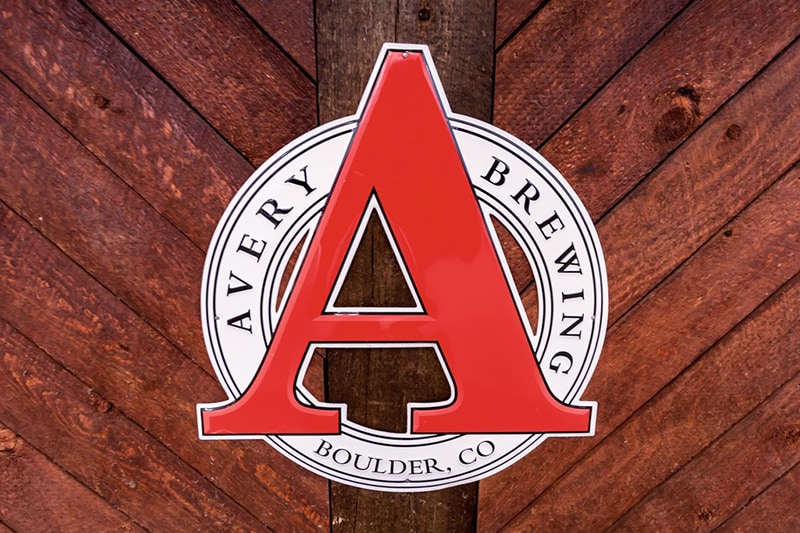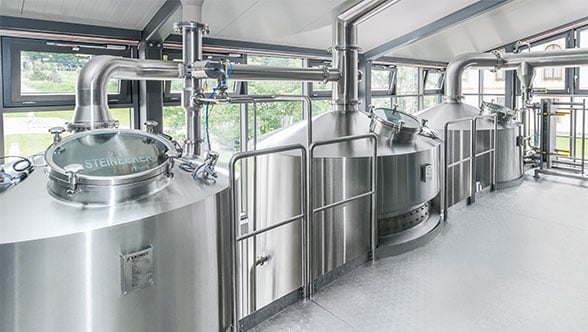With what are meanwhile 23 years of brewing experience behind it, Avery Brewing in Boulder, Colorado, is ranked among the US-American craft beer scene’s pioneers.
Now the brewery was ready for an upgrade, and last year went into operation with a brand-new facility featuring a capacity of around 100,000 hectolitres. When choosing the brewhouse, Avery opted for a CombiCube B, in which the firm brews no fewer than 52 different types a year – a new beer every week, as it were.
Ready for an upgrade
In 2014, 21 years after Adam Avery and his father Larry started brewing beer in a garage, the old, repeatedly expanded brewery had finally come up against the limits of its capacities. Because more and more garages had to be purchased to provide enough room for the steady stream of expansions. In the end, the brewery was accommodated in ten adjacent garages. Now, Avery was ready for an upgrade. Some distance outside Boulder, the family-managed company found a suitable plot, where it erected a brand-new brewery with a restaurant connected, which in its second phase of expansion seats 250 people and also boasts a beer garden. “That was a giant step forward for us,” emphasizes Adam. “You see, in the old brewery we simply lacked the infrastructure for brewing ever-growing quantities of beer. That’s why we decided to go for this future-compatible new building, which even though it had been properly budgeted still constituted a certain risk. To be able to brew beer here today – there’s simply no comparison with what we had before – it’s so great for me and the entire team, whom, by the way, I’m extremely proud of.”
Avery chose a CombiCube B as the core technology. This compact-size brewhouse consists of four vessels: a mash tun, a lauter tun, a wort kettle and a whirlpool. It has been dimensioned for an output of 100 hectolitres per brew with eight brews a day. The old system, by contrast, merely produced 50 hectolitres per brew with four brews a day.
CombiCube B
100 hectolitres per brew with eight brews a day
- Mash tun
- Lauter tun
- Wort kettle
- Whirlpool
A Stromboli Venturi tube, which continuously mixes the wort, has been integrated into the wort copper. The task of the pillow-plate heating surfaces (also used in the wort copper’s “big brother”, ShakesBeer) in the base and walls of the vessel is to ensure even wort heat-up. Thanks to the turbulent flow pattern directly at the heating surface, this system guarantees uniform heat transfer into the wort and minimises fouling. The lauter tun’s effective raking blades make for high lautering yields. A wort-level regulating system serves to control the lautering process, analogously to the Pegasus technology.
Highly flexible working is possible
For malt grinding, an upstream Variomill wet mill with a throughput of ten tons an hour was installed by Avery. Such a high throughput could also feed malt grist to a second CombiCube B, something that Avery intends to install once the first has reached the limits of its capacity. “With this approach, we can quite easily double our brewhouse volume while still retaining the flexibility we need for our many different beers,” is how Steve, Chief Operating Officer bei Avery, explains the idea behind this approach. The brewhouse is already being run round the clock. This is due, in particular, to the wide diversity of beer types: some of them are produced with a brew quantity of only 35 hectolitres, whereas others need the CombiCube’s full output of more than 100 hectolitres. A few of the barrique beers in the brewhouse reach an extremely high original gravity of 32 degrees Plato; these beers are then fermented to an abv of up to 18 per cent. “The CombiCube has turned out to be the ideal tool for us,” says Adam.
In 2015, Avery brewed no less than 52 different beers in the CombiCube B, so one new beer type a week on average. A hop-dosing system has also been integrated in the brewhouse, which lends the beers their wonderfully striking hop aroma and bitterness. In addition, Avery also works with dry hopping in the storage cellar. When the second CombiCube comes at the latest, a vapour condenser as energy recovery system is planned as well, with another one of these to be retrofitted as appropriate to the first CombiCube B now in operation. “One thing at a time,” says Adam.
Filling capacity upsized
While still in the brewhouse installation phase, Avery likewise decided to incorporate a Krones can filler in its filling operations. All other machines (including the ten-year-old glass bottling line and the kegging line) had been taken over from the old brewery, which had also incorporated a can filler. This machine, however, rated at a mere 2,000 cans an hour, was definitely underdimensioned. The new Volumetic VOC can filler – with a Checkmat fill-level inspector connected – by contrast, is rated at 18,000 cans an hour, thus offering nine times the output of its predecessor, and therefore enough scope for the future.
“What we like about the Volumetic is its design and its small footprint,” says Steve Breezley. “In the event of any problems being encountered, its technology enables us to identify any single one out of the 28 filling valves as the culprit. This may prove very helpful.” And Adam adds: “Krones supplied the can filler to us within a minimised timeframe. That was important because we urgently needed it so as to meet the markets’ demand. We had – I think – just two underfills in more than 2,000 cartons, we can fill at different temperatures, and oxygen pick-up is more or less zero. That is top-class technology. Ever since the can filler from Krones has been up and running, the filling operation’s team have smiles on their faces every day. This didn’t use to be the case before.” For him, the can, which boasts exponential growth rates in the craft beer segment, is also the container of the future.
Come of age
The official opening of the new greenfield brewery took place in May 2015, on an area almost four times as large. There, the brewery is able to make 81,000 hectolitres of beer – with an option for yet another expansion. The plan is to upsize the brewery step by step in 2016 by installing further fermentation and storage tank capacities, so as to reach an annual output of 155,000 hectolitres. The brewery is currently anticipating a production volume of 107,000 hectolitres in 2016.
When asked about the US craft beer scene in general, Adam Avery is very optimistic: “Everyone’s talking about a market share of 20 per cent in a few years’ time. It may be possible. We, in any case, are already noticing that our business is getting easier by the day. We no longer have to actively sell our craft beer, no longer have to inform or educate consumers: we’re simply facing a rising tide of demand.”
Avery Brewing found its niche in the booming craft beer market at an early stage, with heavily hopped beers, with taste-explosive, high-abv specialities and with barrique beers, and can meanwhile sustainably draw on the benefits involved. By building the new brewery and installing the CombiCube B, after 21 years of garage existence, Avery Brewing has come of age.
Wouldn't that be something for you too?
